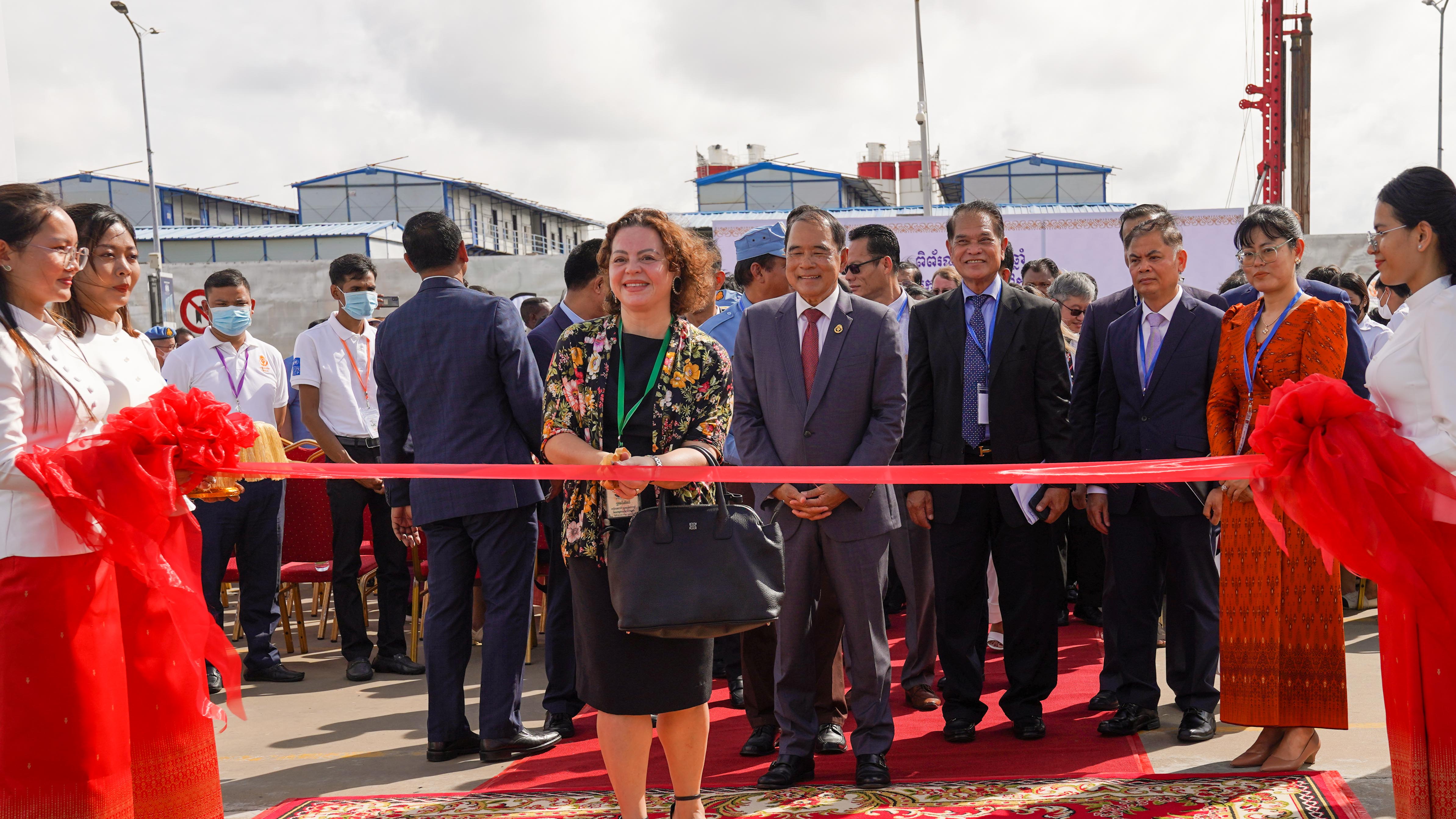Remarks by Ms. Alissar Chaker, UNDP Resident Representative
National Conference Commemorating 30 Years of Mine Action in Cambodia: “Providing Safe Ground, Creating Smiles”
November 14, 2022

H.E. Mr. Ly Thuch, Senior Minister and First Vice President of the Cambodian Mine Action and Victim Assistance Authority
H.E. General Sem Sovanny, Second Vice President of the Cambodian Mine Action and Victim Assistance Authority
H.E. Mr. Prum Sophakmonkol, Secretary General of the Cambodian Mine Action and Victim Assistance Authority
Excellencies, Ambassadors, Sector operators, Ladies and Gentlemen.
It is my great pleasure to be here today at the commemoration of 30 Years of Mine Action in Cambodia. Cambodia is the cradle of mine action; it is where the term was first coined. I am also happy to note the conference title “Providing Safe Ground, Creating Smiles”, which reflects the human face of mine action - a very technical and often military domain, but also an enabler and a driver for human security and local development.
I am here representing the United Nations Development Programme (UNDP) in Cambodia, but I would like also to recognize key development partners who trusted and partnered with UNDP on its flagship Clearing for Results project. I would like to thank, particularly, Australia, New Zealand, and the Republic of Korea. My gratitude goes as well to previous partners, including Austria, Belgium, Canada, France, Ireland, Norway, Spain, Sweden, Switzerland, the UK, and the US. I am immensely proud that our joint support to the Royal Government on mine action through the Clearing for Results project has contributed to 12% of the whole of sector achievement.
Listening this morning to the deminers’ statements and to affected communities’ testimonies was both humbling and a strong reminder that as development partners we must remain steadfast in our commitment to assist Cambodia to close once and for all this final chapter of its tough history by achieving a Mine Free Cambodia by 2025.
And we are so close! Collectively, and under the leadership of H.E. Ly Thuch and the Cambodian Mine Action and Victim Assistance Authority (CMAA), Cambodia spearheaded humanitarian mine action, and through strong national ownership, needs-driven, people-centered practices returned safe land to over 7.5 million people, nearly 45% of the population, for productive and development use.
The Cambodian success does not recognize national borders, Cambodia has been sharing its experience worldwide, through its contributions to UN peacekeeping operations in 8 war-torn countries[1]. Thank you Cambodia! I would like to particularly congratulate the Kingdom on its ranking as number 13 among 122 nations in terms of fielding women peacekeepers. A great achievement also on the women empowerment front.
Today, there is much to celebrate, but also, much to reflect on. With achievement, we must also acknowledge the sacrifices made by so many, and we must be cognisant of the new challenges and opportunities the future presents.
For those of us who have seen deminers at work in minefields, we surely stand in awe for their commitment, bravery, and fortitude in undertaking this painstaking, vital, life-saving work. Sadly, some have made the ultimate sacrifice in doing so. Yesterday, today, tomorrow, and always, we will honour the living and cherish the memory of the deceased.
The Ottawa Convention’s deadline of 2025 is increasing the urgency to expedite clearance activities. This is still achievable should the needed human and financial resources be allocated and access to contaminated lands secured in a timely manner. One million people still live in areas contaminated by unexploded ordnance. They have the right to live in safety, with prospects of prosperity.
These mines should be removed. But clearance is only one step of a process. Once safe land is returned to communities, they need support to put the cleared land to productive use and rebuild their lives and livelihoods, to access basic social services and infrastructure for ensuring the multiplying effect of development and peace dividends. We encourage the Royal government to also integrate mine action into its development plans.
Some 65,000 people and their families have fallen victim to the atrocities of mines and explosive ordnance. As Cambodia moves forward towards the future, Victim Assistance should remain high on the agenda to alleviate human suffering and to ensure that victims and their families are provided with individualized support, rehabilitation, and socio-economic reintegration, founded in the principles of dignity and respect.
I would like to take this opportunity to command Cambodia’s strong national commitment to achieving Mine Free Cambodia by 2025 and for prioritizing mine action through adopting the national Sustainable Development Goal 18 (SDG 18) on “Ending the negative impact of mines and explosive remnants of war and promoting victim assistance”. I also renew UNDP’s commitment to continue supporting the royal Government’s efforts for a landmine free Cambodia by 2025, including through the mobilization of new financial resources and partnerships with the private sector.
Landmines and explosive remnants of war maim and kill indiscriminately. They end lives and destroy livelihoods. Their mere presence stalls development and disrupts stability. Mine action is a joint endeavor, national efforts should be complemented by partnerships and cooperation at the local, regional, and international levels. Thus, I call on all development partners, NGOs, and the private sector to scale-up their efforts in pursuit of a Mine Free Cambodia by 2025 and of the 2030 Agenda ensuring No One is Left Behind.
I read somewhere that “Landmines and explosive remnants of war represent the worst of humanity. But efforts to eradicate them reflect humanity at its best.”
So, let us all commit today to intensify our work to rid Cambodia of these vicious threats.
Thank you.
[1] Sudan, South Sudan, the Central African Republic, Chad, Syria, Lebanon, Yemen, and Mali.

 Locations
Locations